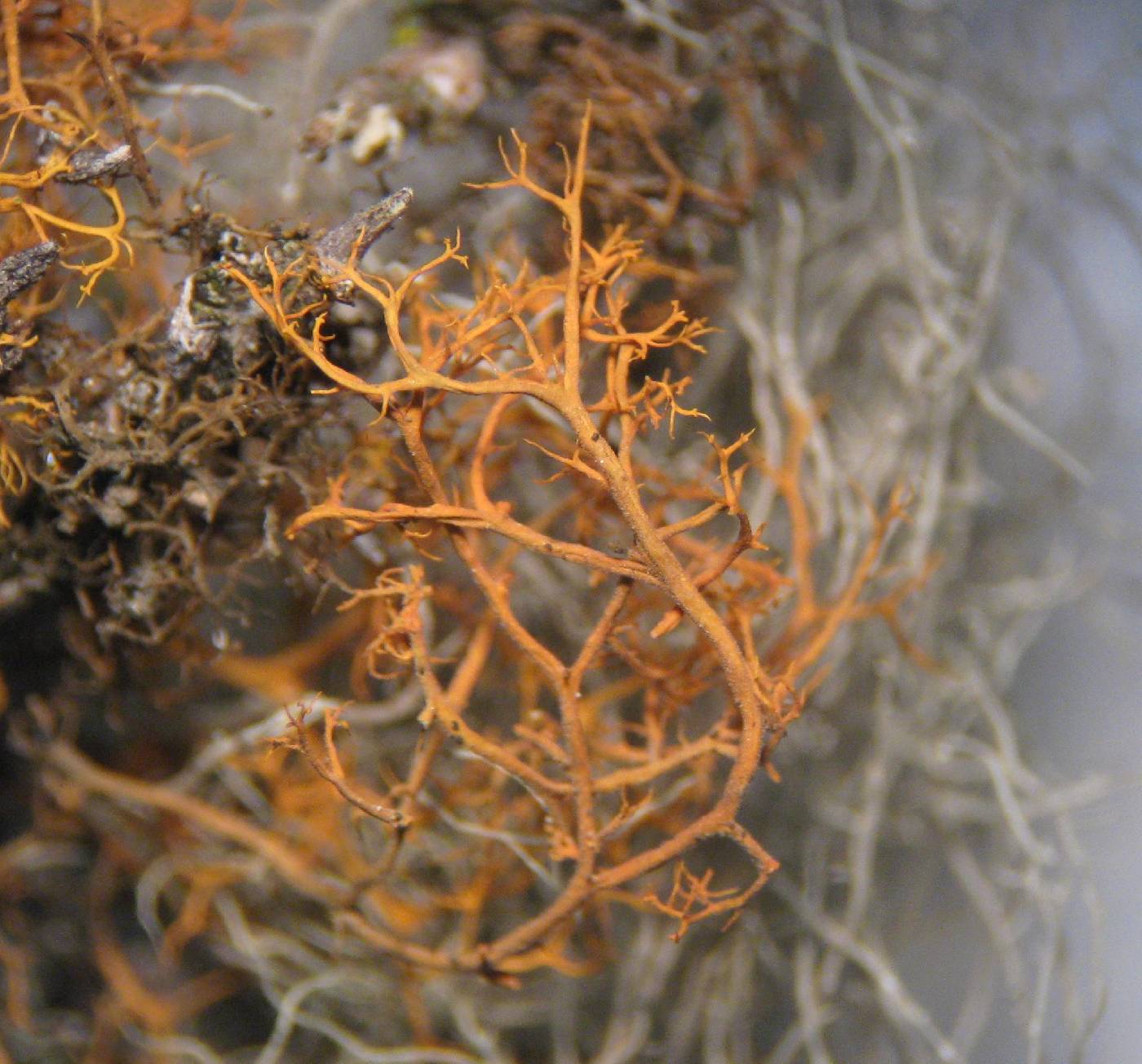
Consortium of Lichen Herbaria
- building a Global Consortium of Bryophytes and Lichens as keystones of cryptobiotic communities -
- Home
- Search
- Images
- Species Checklists
- US States: O-Z >
- US National Parks
- Central America
- South America
- US National Parks
- Southern Subpolar Region
|
Family: Teloschistaceae |
Nash, T.H., Ryan, B.D., Gries, C., Bungartz, F., (eds.) 2004. Lichen Flora of the Greater Sonoran Desert Region. Vol 2. Life habit: lichenized Thallus: foliose, subfruticose to fruticose lobes: flattened and dorsiventral to +rounded in section, sparingly to richly branched, often with cilia surface: usually +entirely bright yellow to reddish orange, usually paler or gray below, occasionally entirely gray-green to ash-green in some species, or always gray-green to ash-green in a few species, soralia and/or blastidia sometimes present, maculae usually present cortex: present on all surfaces in most species but in some species the lower cortex cracking to expose the medulla, often subsequently forming a secondary cortex, prosoplectenchymatous, composed of longitudinal, periclinal, agglutinate hyphae photobiont: primary one Trebouxia, secondary one absent medulla: prosoplectenchymatous, composed mostly of +parallel, vertically aligned, loosely interwoven hyphae, unevenly distributed and partly absent where the cortex runs from top to bottom Ascomata: apothecial, terminal, subterminal, marginal, or laminal, sessile or stipitate; disc: round, concave to flat or convex, yellow to brownish orange; thalloid margin: persistent to excluded, sometimes ciliate hymenium: hyaline below, granular, yellow, K+ purple; paraphyses: septate, unbranched to slightly branched, apices +capitate to moniliform, anastomoses short but rare; hypothecium: hyaline or pale asci: oblong to clavate, Teloschistes-type, composed of several layers but unitunicate, I+ blue; apically thickened with a broad internal beak, inner part of apex and external cap I+ blue, 8-spored ascospores: hyaline, polaribilocular or quadrilocular, oblong to narrowly ellipsoid Conidiomata: pycnidial, laminal to marginal, globose, round, yellowish orange to orange-red, immersed to protruding, multilocular conidia: hyaline, simple, bacilliform, bifusiform, or narrowly ellipsoid, 3-5 x 1-2 µm Secondary metabolites: anthraquinones (mainly parietin, but also teloschistin, fallacinal, parietinic acid, emodin, and erythroglaucin), depsidones (caloploicin, vicanicin, and isofulgidin), as well as some unidentified substances present in orange parts Substrate: on twigs, bark, rock, or soil on rock, especially in warmer, subhumid and humid areas Geography: cosmopolitan, most species rich in Australasia, southern parts of Africa, and South America. Teloschistes: from the Sonoran region |
Powered by Symbiota









